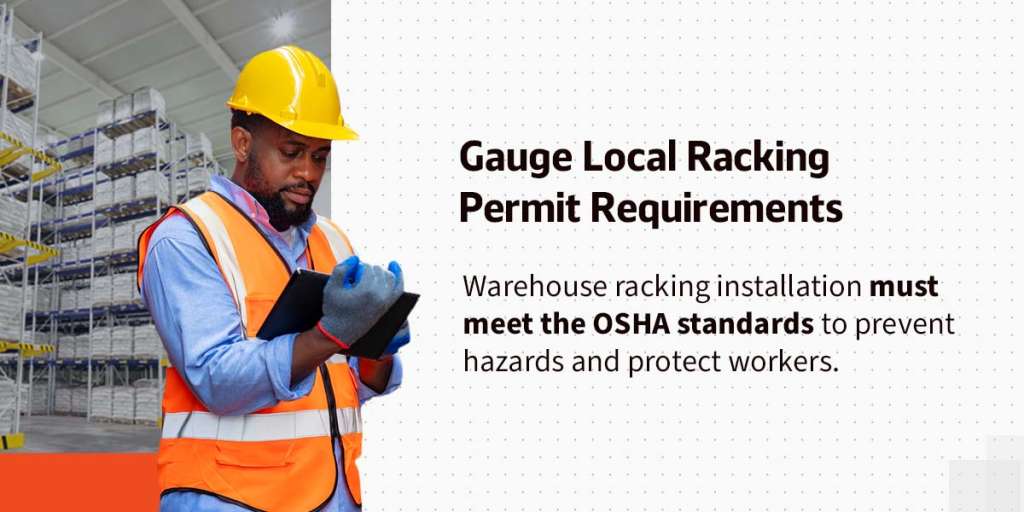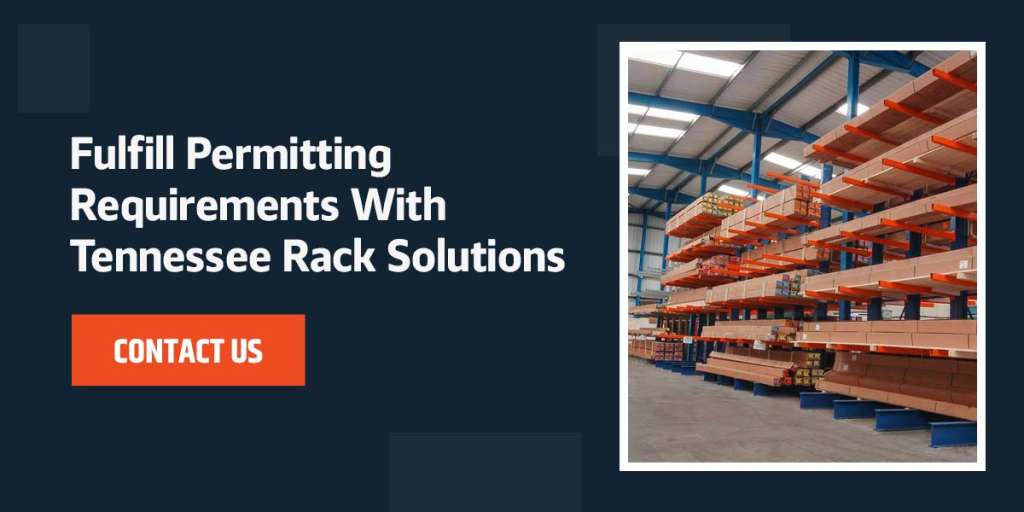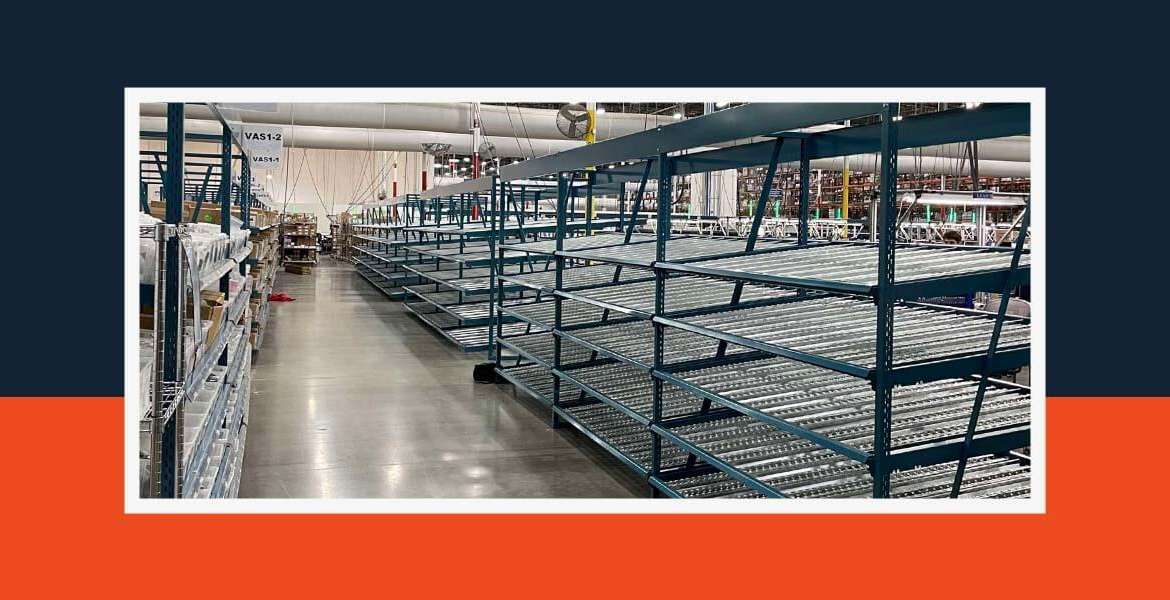Permits are crucial for warehouse racking installations. They help businesses meet safety standards set by bodies like OSHA. Obtaining the proper permits can also prevent delays and additional costs. So, how exactly does a company achieve permitting requirements for warehouse racking?
Read on for a complete guide on applying for and obtaining a permit and tips on avoiding common compliance challenges.
Why Are Permits Required for Pallet Racking Systems?
Warehouse racking permitting requirements ensure that racking systems meet the safety standards. These regulations can help prevent accidents, reduce product wastage and maintain the structural integrity of the racking. They’re set around the Occupational Safety and Health Administration (OSHA) general requirements for storage and material handling.
Permits ensure that racking systems are properly anchored to the floor to reduce serious injuries. They also check that facilities aren’t obstructing fire safety systems, protecting workers and inventory. In areas like Tennessee, where there are two fire seasons, these precautions are essential to reduce the chances of loss of life and property damage. Different permitting requirements address various possible hazards.
How Permitting Requirements Differ
Warehouse employees can face many hazards, but with proper planning, design and training, companies can help make the work environment safer. Requirements like pallet rack permits help keep workers safe and protect inventory from spoilage and damage. Here are some of the different permitting requirements for warehouse racking systems:
- Local safety codes: Different municipalities have varying safety codes. Tennessee doesn’t have specific state-level codes, but it follows OSHA regulations for warehouse workplace safety.
- Fire safety regulations: Pallet racking should be installed at specific distances, depending on the warehouse, so there is sufficient space for fire suppression systems.
- Weight and load capacities: Authorities typically must approve the maximum load a racking system can support to ensure it meets code.
- Structural requirements: Structural plans or calculations may be necessary to prove that the racking system is sturdy enough to handle heavy loads and won’t harm workers.
What Permits Are Required for Warehouse Racking Systems?
Building and fire permits are typically required for warehouse racking systems. These permits ensure the racking structure complies with local building codes. Tennessee follows OSHA standards and enforcement initiatives for warehouses, which Section 5(a)(1) of the Occupational Safety and Health (OSH) Act addresses.
Employers must take these regulations seriously to avoid being cited for violating this section. Getting the proper permits can reduce the chances of potential hazards. Here are the licenses you’ll need for warehouse racking systems in Tennessee:
- Zoning regulations: Zoning regulations define where warehouses can be built and can impose size and height restrictions. They call for location approval, and it’s crucial to meet them before installing racking systems.
- Seismic requirements: Warehouse racking systems in areas with seismic action, such as the southeastern U.S., particularly in places like the East Tennessee Seismic Zone, carry a significant earthquake risk. In these areas, warehouse racking systems should be adequately anchored to the building’s foundation and be able to resist seismic forces.
- Fire safety regulations: Fire safety is crucial in a warehouse. Companies should achieve compliance with the NFPA 5000 Building Construction and Safety Code to increase safety throughout the workplace.
Permit Application Steps for Warehouse Racking
Do you want to know how to get a permit for warehouse racking? The process typically involves preparing engineering drawings, submitting documentation and scheduling inspections. Here are the common steps:
1. Gauge Local Racking Permit Requirements

The first step in setting up racking systems is to understand the warehouse racking permit process and regulations in the local area, which vary depending on the location. For example, in Tennessee, you may need to follow seismic guidelines to meet the local requirements. Here are some of the factors to consider:
- Seismic zone category
- Minimum height for a permit
- Use classification
- Fire protection requirements
- ADA compliance rules
- Safety and code compliance
Warehouse racking installation must meet the OSHA standards to prevent hazards and protect workers. You can speak with a permitting official at your city’s building department to get the latest details on racking permit requirements in your area.
2. Work With Qualified Racking Professionals
Good-quality warehouse racking is essential to maintaining and improving your material storage and organization, boosting operations in the process. Installing and maintaining quality warehouse racking is just as necessary to support speedy production and delivery.
That’s also why hiring experienced racking professionals to fit your racking is crucial. It gives you peace of mind that everything gets installed correctly and effectively while reducing the risk of injury or damaged materials or equipment. Hiring an expert also helps you obtain a permit and abide by local or OSHA regulations.
3. Compile Your Permit Documentation
To get a warehouse racking permit, you must prepare the correct documentation. You can speed up your racking permits’ approval and avoid project delays by ensuring your application is complete and accurate. Here is the most common information required:
- Sprinkler and fire suppression system plans
- ADA clearance and egress routes
- Engineer-stamped drawings
- Permit application form
- Warehouse site and floor plans
- Seismic and load-bearing structural calculations
- Rack specifications, such as height, material and load capacity
- Elevation views and racking layout
4. Submit Your Permit Application
After gathering your documentation, submit it with your racking permit application to your local department, usually the planning department or the building and safety division. Application approval times vary, but if you’re chasing a tight deadline, you might be able to expedite the review for a fee.
5. Evaluate Corrections or Requests
During the review, you might need to contact your permit consultant or engineer to address issue corrections or provide additional information. It’s a common occurrence that requires prompt responses and clear communication.
To prevent stalling the process, you may need to address issues related to the following:
- Fire codes
- Seismic design
- Anchoring and support systems
- Calculations
- Egress clearance
6. Obtain Approval and Schedule Inspections
Once you receive your racking permit, you can start installing your system. After getting approval, you must ensure your permit is visible at the installation site. You must also arrange a warehouse racking inspection during or after the installation.
To ensure you pass the inspection, your racking system must precisely match the approved drawings and comply with the permit’s building or fire code stipulations. Following a successful inspection, you can begin operating your warehouse storage racks.
Common Compliance Challenges and How to Avoid Them
The most common mistakes in racking permit applications are inadequate anchoring, incorrect load calculations and fire code clearance issues. You can avoid challenges like these by preemptively identifying them and applying the following strategies:
- Implement a pallet racking protection strategy: Identify subtly damaged racking systems by looking for hairline cracks, small deformations and slight bends. Then, implement a plan to assess vulnerabilities, optimize warehouse layout and improve visibility. Routinely inspect systems and keep records of everything.
- Conduct regular risk assessments: Encourage employees to participate in risk assessments to give them firsthand experience in identifying potential hazards. Consistent risk assessments typically involve examining warehouse equipment, processes, layout and storage systems for possible areas of improvement.
- Engage with industry-relevant resources: Stay updated on the latest regulatory requirements and best practices by engaging with resources like blogs on warehouse racking topics.
- Partner with professionals: When you’re planning on building warehouse racking, partner with professionals like Tennessee Rack to install racks that maximize your space while complying with regulations and local permitting requirements.
Fulfill Permitting Requirements With Tennessee Rack Solutions
Tennessee Rack is a trusted name in the warehouse rack industry. We are a leading provider of high-performance racking systems and storage accessories, with the capacity to serve businesses of all sizes and industries. With our expert knowledge, we can develop the perfect storage solutions for your warehouse space, inventory type and employee needs.
We’re committed to providing racking solutions that offer unmatched durability and make it easier for workers to organize inventory. Our warehouse storage systems align with safety standards and make protocols easier to follow.
Contact us or request a free quote to find a warehouse racking solution that works for your business and meets safety standards.

